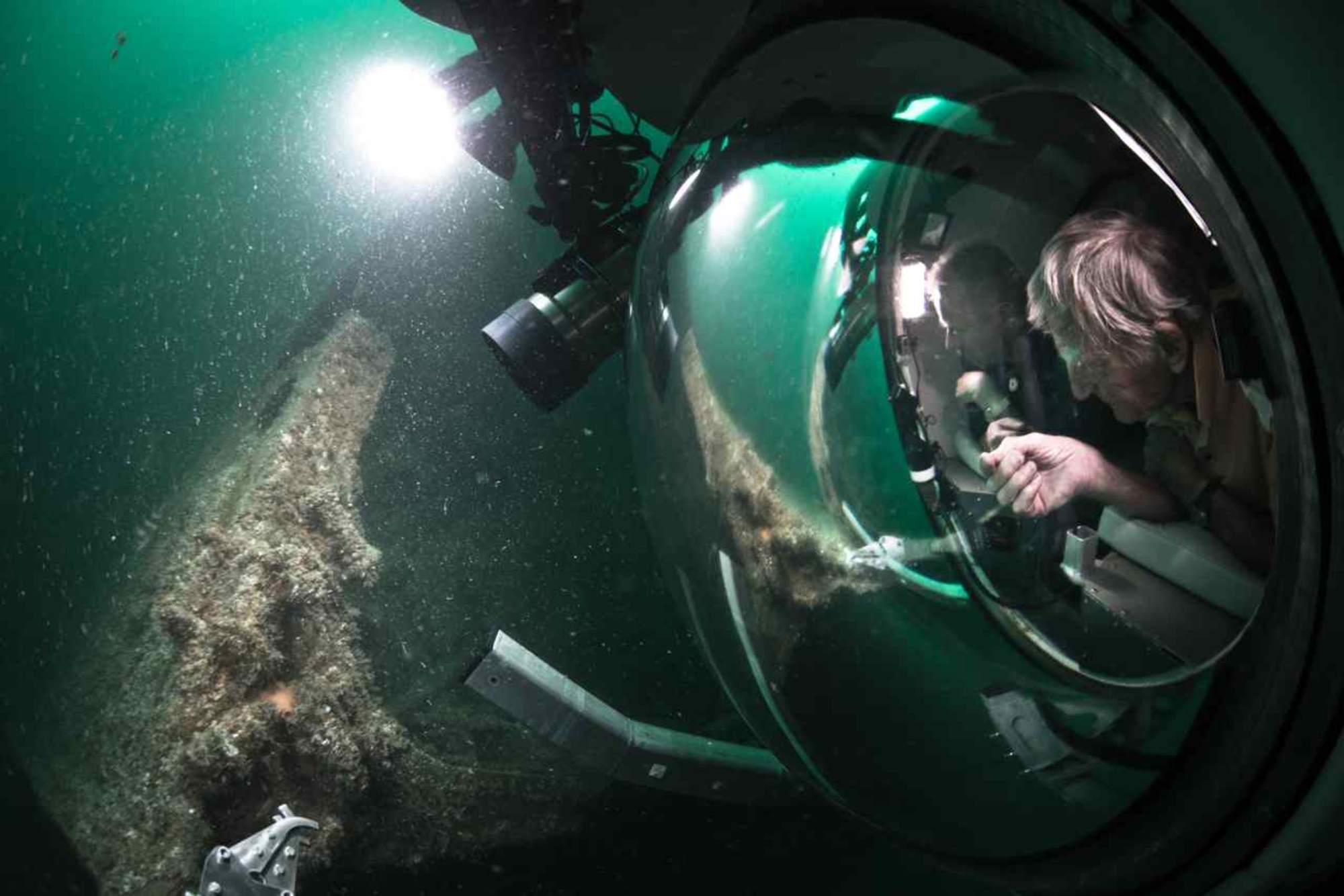
- Home
- Documentary campaigns (2000-2013)
- Caen Plongée, the forerunners
The underwater remains of the Normandy landings provide direct evidence of Operation Neptune. Some members the diving club Caen Plongée were among the first to identify these sites.
A pioneering role
As early as the 1970s, some salvors became interested in the history of the wrecks they were salvaging. Then in 1995, two divers from the club Caen Plongée, Serge David and Yves Marchaland, assisted by Patrick David, sought to identify the wrecks they encountered. They studied a variety of books, researched archives, and talked with former salvors like Jacques Lemonchois, as well as with D-Day veterans. Dive after dive, they observed and photographed about fifty wrecks linked to the Normandy landings. They also carried out surveys using a side-scan sonar. This allowed them to have an overview of the sites, while also detecting the scattered fragments of certain wrecks. At a time when diving on recent wrecks was still associated with treasure hunters, they played a pioneering role through their patient work of identification. They were able to correct many erroneously identified sites from the Second World War in the Baie de Seine.
Publicising and raising awareness
Between 1998 and 2012, Caen Plongée published their work in books whose wide distribution rendered this invisible and largely forgotten heritage more accessible. Their research also contributed to the national archaeological map for this part of the French coast. Consequently by 2014, this database listed 42 archaeological maritime sites related to the Second World War in the départements of Calvados (29 sites) and Manche (13 sites).





